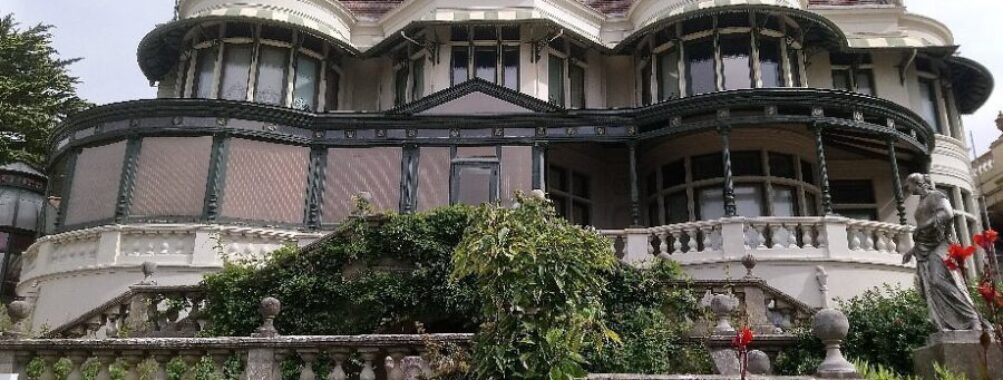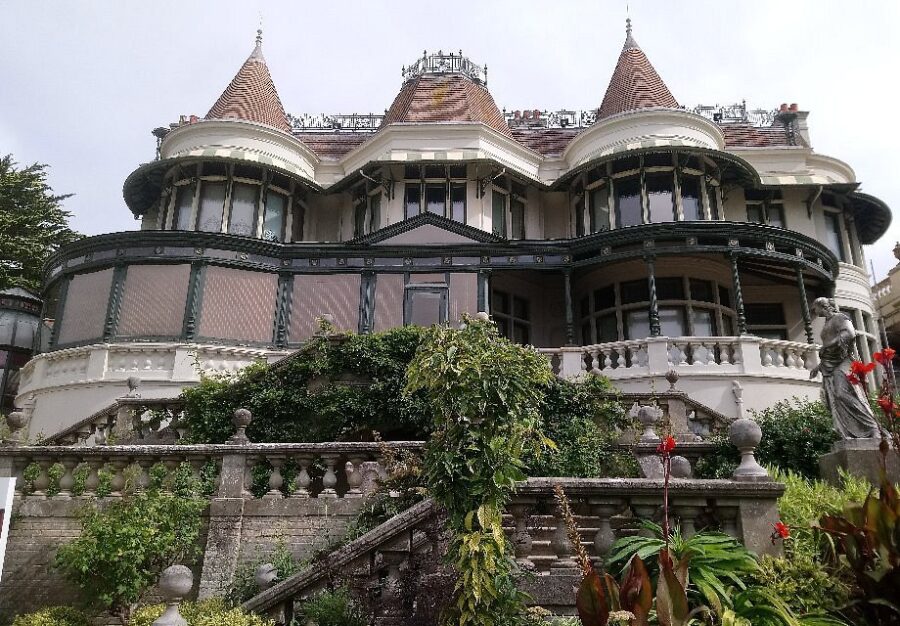
Russell Cotes Art Gallery & Museum
Table of Contents
- History and Significance
- Main Attractions and Activities
- The House Itself
- Art Collection Highlights
- Special Experiences
- Visitor Experience
- Tips for Visitors
- Accessibility and Facilities
- Unique Features
- Overall Impressions
- Pros and Cons
- Location
- Places to Stay Near Russell Cotes Art Gallery & Museum
- Find and Book a Tour
- Explore More Travel Guides
History and Significance

Perched dramatically on Bournemouth’s East Cliff like a wedding cake left too close to the sea, the Russell Cotes Art Gallery & Museum is that rare cultural institution that refuses to take itself too seriously. Built in 1901 as an extravagant retirement gift from Annie Russell Cotes to her hotelier husband Merton, this flamboyant Edwardian villa-turned-museum embodies the couple’s eccentric passions and bottomless budget for souvenirs.
What makes this place special isn’t just the collection, though it’s impressive, but the unapologetic maximalism of its setting. Where else would you find Pre-Raphaelite paintings displayed alongside Samurai armor, all beneath ceilings dripping with gilded cherubs? The Russell Cotes didn’t just collect art; they created a physical manifestation of their wanderlust, stuffing every nook with treasures from their global travels during the golden age of steam travel.
Main Attractions and Activities
The House Itself
-
The Winter Garden: A glass-drenched indoor jungle where palm fronds brush against Venetian stained glass
-
The Japanese Room: A shimmering fantasy of silk wall coverings and lacquered cabinets
-
Merton’s Study: Preserved exactly as he left it, complete with questionable 19th-century taxidermy
Art Collection Highlights
-
Albert Moore’s “Dreamers”: A luminous Pre-Raphaelite masterpiece that glows like a pearl
-
The Bournemouth Collection: Local artists’ surprisingly radical takes on coastal life
-
Annie’s Travel Treasures: From Egyptian scarabs to Maori carvings, all displayed with Victorian enthusiasm
Special Experiences
-
Behind-the-Scenes Tours: Where you’ll learn which objects were purchased vs. “acquired”
-
Sketching Sessions: They provide stools and boards for budding artists
-
Ghost Hunts: Yes, really – the place is allegedly haunted by Merton himself
Visitor Experience
Stepping through the ornate doors feels like being swallowed by a particularly cultured dragon’s hoard. Every surface fights for your attention – here a marble nymph, there a bronze Buddha, all watched over by portraits of the Russell Cotes themselves (he with magnificent mutton chops, she with a glare that could curdle milk).
The crowd is an entertaining mix of serious art students, confused coach tourists, and local retirees who come for the excellent tearoom. Staff adopt a knowing smile when visitors gasp at particularly outrageous decor choices (the gold-leafed mermaid fountain in the hallway remains controversial).
What’s refreshing is the lack of velvet ropes – you can get nose-to-nose with 17th-century Dutch masters, though they politely request you don’t touch the more “enthusiastically arranged” displays.
Tips for Visitors
-
Time Your Visit: Mornings are quietest; late afternoons glow golden through the stained glass
-
Join a Free Tour: The volunteers’ gossip about the Russell Cotes is priceless
-
Visit the Loos: Even the bathrooms are decorated with museum pieces (don’t worry – they’re clearly labeled)
-
Check for Events: Their “Lates” program includes everything from jazz nights to paranormal investigations
-
Don’t Miss the View: The clifftop garden offers dizzying panoramas of Bournemouth Bay
Accessibility and Facilities
For a 120-year-old cliffside villa, accessibility is surprisingly good:
-
Wheelchair lift to bypass the grand staircase
-
Touch tours for visually impaired visitors (book in advance)
-
Large print guides are available at reception
The tearoom serves proper Dorset cream teas with a side of sea view, though the scones tend to sell out by 3 pm. There’s also a charmingly old-fashioned museum shop where you can buy everything from postcards to replica Victorian perfume.
Unique Features
What sets this museum apart:
-
The “Cabinet of Curiosities” vibe – Every display feels personally collected rather than clinically curated
-
The Secret Staircase – Ask nicely, and staff might show you Annie’s private route to the kitchen
-
The Changing Exhibitions – Recent shows have ranged from LGBTQ+ Victorian artists to surf photography
-
The Resident Cat – A ginger tom named Percy who considers himself head of security
Overall Impressions
The Russell Cotes is that rare museum where the container rivals the contents for your attention. It’s unashamedly theatrical, occasionally bonkers, and utterly compelling. You’ll leave feeling like you’ve time-traveled to an era when wealthy Brits could fill entire rooms with “souvenirs” from Egypt and nobody questioned their taste.
Most importantly, it doesn’t feel frozen in aspic – contemporary interventions (like the brilliant audio guide narrated by a fictional maid) keep the experience fresh and engaging.
Pros and Cons
Pros
-
Architectural showstopper with breathtaking sea views
-
Eclectic collection that rewards close looking
-
Excellent free tours full of juicy historical gossip
-
Refreshingly unpretentious atmosphere
Cons
-
Some areas are cramped – not ideal for claustrophobes
-
Limited parking (but good bus links)
-
It can get stuffy on warm summer days
If you prefer your cultural institutions with a side of personality (and possibly ghosts), the Russell Cotes delivers in spades. It’s the antithesis of the white cube gallery – a place where art, architecture, and sheer chutzpah collide gloriously.
Just don’t be surprised if you develop a sudden urge to grow mutton chops or start collecting Japanese netsuke after your visit. The Russell Cotes’ eccentric spirit is contagious.
Location
Places to Stay Near Russell Cotes Art Gallery & Museum
Find and Book a Tour
Explore More Travel Guides
No reviews found! Be the first to review!